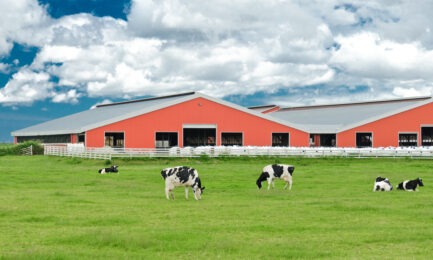Hospitality’s supply-and-demand balance could be changing
After a decade of a seller’s market dominated by high occupancy rates and rising prices, some hospitality industry watchers are predicting that 2020 could be the year when planners finally start to regain their footing—at least in some markets. What will be the new reality? An increase in construction, particularly in the largest markets, could bring more opportunities for planners to negotiate, particularly if they can be flexible and creative.
We hacked into the crystal balls of major prognosticators. Here’s what they say.
A Challenging Market
The next two years could bring a “challenging” group market—particularly in late 2020 and early 2021, according to Cvent Group Business Outlook’s analysis of booking activity for the United States.
An analysis of business booked through the platform shows that as of late September of last year—following increases in the first six months of the year—the number of group room nights reserved for the third quarter of 2020 is down 1.7 percent and will continue to be down in the two following quarters.
Moreover, the size of groups is declining slightly, according to Cvent research. The average group block reserved last year for future stays was 222 rooms, a decrease of about two rooms per group compared to the previous year.
Jeffrey Emenecker, senior director of analytics at Cvent, attributed the likely decline to a combination of factors. Jewish holidays may account for some fall off—dates available for events on the 2020 calendar are fewer in this respect than in 2019. He also speculated that while market uncertainly itself can tap the brakes on demand, he didn’t think it deserved all the blame. Market uncertainty of some sort has been a constant for a while now.
Emenecker suggested that hoteliers might be more aggressive in their efforts to attract and book group business earlier in the booking window, as opposed to holding inventory until later. As a result, he said, planners may be able to exert a bit more leverage in pricing and nonprice concessions than previously.
Cycles Within Cycles
Diminishing growth in hospitality revenue was noted in a December report from CBRE Hotel Research, as well. Its analysis of the U.S. lodging industry concluded that occupancy levels will take a dip over the next two years, but will stay above 65.5 percent through 2021. Hotel occupancy rates hit a record-level 66.1 percent in 2018, the 10th consecutive year without a national decline.
Nonetheless, CBRE forecasted that the annual average daily rate (ADR) for the U.S. market will go up, to $131.08, a RevPAR increase of 0.8 percent for the year. Mark Woodworth, senior marketing director for CBRE Hotels Research, predicted real RevPAR gains of 0.3 percent in 2022 and 1.5 percent in 2023.
“Like other industries, hotels historically have followed the traditional business cyclical performance pattern: peak, contraction, trough, expansion and back to peak,” Woodworth said. “By our measure, the U.S lodging industry reached the peak of its current cycle in 2018. History calls for a downturn in 2020 or 2021. However, because the forecast declines in occupancy and real ADR are minimal, we are seeing a slight rollback in performance, which leads to sustained expansion starting in 2022.” He called the phenomenon, “a mini-cycle within the cycle.”
Lower Occupancy and Slower Revenue Growth
Jan Freitag, senior vice president at STR, an industry data analysis company, said his spreadsheets are telling him that occupancy could decrease by 0.3 percent, to 66.1 percent. He pointed to an influx in new supply, largely in the top 25 markets (where supply has grown by 2.5 percent), but said demand is increasing by only 1.6 percent. Some markets, such as Seattle, have seen supply grow more than 6 percent. A total of 204,000 guest rooms are under construction nationwide.
Still, any occupancy decline will begin from the Olympian heights recorded in 2019 of 74.4 percent. Three out of four rooms consistently filled is a very high level.
Overall, rates will grow by about 0.9 percent—“basically flat,” he said. Freitag is seeing price increases below the rate of inflation, which means hotels must either cut costs or find revenue outside the room rate. That could mean more pressure on F&B or spa costs. But if sales managers want to fill the rooms at any cost, that could give planners pricing power in those markets.
Uncertainty played a role in Freitag’s calculations, too. The 2020 election, Brexit, continuing trade wars and recession in Germany were all factors in a prediction by Tourism Economics for slower growth.
Freitag also warned that uncertainty can cause planners to delay signing decisions. “Planners who can be flexible could find more opportunities,” he said, suggesting that housing attendees at limited-service properties and meetings at expanding convention centers could take advantage of the growth trend he is seeing.
More Caution
Longtime statistics watcher Mike Dominguez, CEO at ALHI, predicts that the caution now present in the market, which is causing shrinkage in some booking windows, might resolve itself in the coming year. He points to a wariness resulting from consolidation in the larger economy that peaked in 2018 in tech and medical verticals, which are very meetings-focused. “That resulted in a short-term disruption, but could help long-term,” he said.
Uncertainty in the global economy combined with a presidential election year in the United States also could also cause planners to take more of a wait-and-see approach for the next few years. “There is a lot of noise in the market, and that doesn’t make a very good environment for people to plan,” Dominguez said. His numbers are telling him that 2021 looks weird, not soft, but not likely to be of the same strength as the last few years.
“Uncertainty is driving hesitancy; that doesn’t mean the meetings won’t happen,” he said. He expects more clarity by the first quarter of 2020. “People are being cautious, protecting themselves in case scale, size and attendance change.”
Dominguez is not seeing a dip in occupancy rates for meetings hotels. “We have not been building ballrooms; supply has been guest-room driven rather than meeting-room driven,” he said. When 72 percent of everything built over the last five years has been limited-service properties, planning a 500-person meeting in a city that has not seen investment in hotel rooms “will be the same challenge as over the last several years,” he predicted.
Meetings Growth
American Express Meetings and Events 2020 Global Meetings and Events Forecast found that despite global uncertainty, event industry professionals are “very optimistic” about the number of meetings that will be held, with a projected growth of 2.54 percent in meeting activity in 2020—some of which will be internal meetings that don’t require hotel rooms.
Yma Sherry, vice president for North America with American Express Meetings & Events, stated in the report, “Supply and demand is still an issue. Planners want to go to the major-tier cities, but because hotel and meeting space availability has not kept up with demand over the last few years, they’ve been moving to second-tier cities—which are more affordable, but also may add to travel time for meeting attendees.”
Will 2020 be the year that space catches up with demand? Sherry says planners could see room availability for 2020 increase modestly, by 0.8 percent to 1.4 percent, and available meeting space could increase slightly more, by 0.8 percent to 1.9 percent. She expects airplane capacity and volume to be up in 2020, as well. However, group air costs could rise in 2020, with North America seeing the biggest increase, at 3.2 percent.
Overall, cost per attendee, per day is lower in the United States than in Canada. U.S. respondents predicted incentives would once again be the biggest meeting ticket at $685 per person, per day, while in Canada, product launches would top the scales at $798 per person. “It is apparent that U.S. organizations spend the most per attendee at events for their employees and top customers—people who are already familiar with and, presumably, loyal to the organization—while in Canada the biggest spend is on marketing/sales events, where the focus is on attracting new customers,” according to the report.
Win in Any Market
Negotiating is always relative. Even in strong seller markets, creative planners can often craft a solution that fits the budget and checks the boxes. When markets are in transition, sometimes you have to ask even more questions to find the porridge that is just right.
Leslie Rakar, director of global accounts with ConferenceDirect, says hotel rates are pretty high all over the country right now, but they don’t seem to be going up quite as quickly as they have in the last few years. Her indicator of when the market has truly changed is when she presents her requested list of concessions—everything from 70-30 cumulative attrition and presidential suites for VIPs to free Wi-Fi in the breakout rooms—and gets universal nods of approval. “I know it is going to change at some point,” she said. “Next year is an election year, so perhaps that is when it will come,” she theorized.
In the meantime, she is shopping around to find beds that are not too expensive and not too out of date—often that means going to a second- or third-tier city, especially for associations. While Nashville and Austin, Texas, are hot right now, they can be expensive. Rakar has had luck in Scottsdale, Arizona; Miami, Tampa, Florida; greater Dallas and Chicago. “They have been “pretty reasonable, depending on the time of year,” she said, crediting an influx of new properties for adding space that needs to be absorbed and the magical invoice-lowering properties of increased competition—especially if it has been a while since the last refresh. “If a property hasn’t been renovated in two years, the sales folks often need to be more flexible on price,” she said.
What is on Your Concession Checklist?
When rates aren’t as flexible (Rakar has found $5-15 per room is the max), the little extras can sometimes make all the difference. Following are items Smart Meetings readers look for when crafting a contract.
Wi-Fi Fees: Go into the discussion knowing how the bandwidth will be used to make sure you are negotiating for enough, because “basic” means something different in different places. Don’t forget to ask for adequate coverage at the registration table and in breakout sessions, and get enough speed to livestream the keynote.
Audiovisual: Bringing your own AV team is always open for negotiation. Ask the property to waive the fee if you don’t use its in-house provider.
Furnishings: Azure Collier, content marketing manager for Tripleseat, suggests finding properties with the appropriate furnishings (conference setup, lounge areas, booths) instead of hiring outside vendors.
Food and Beverage: This can be a big budget area. Ingrid E. Lundquist, founder of The Lundquist Company, advises eschewing buffets in favor of hearty, but less labor-intensive plated items. Can nonalcoholic beverages, including coffee, be included in the meeting room rate?
Fees: Address resort/urban/other fees during the negotiation process rather than letting attendees get surprised at checkout.





